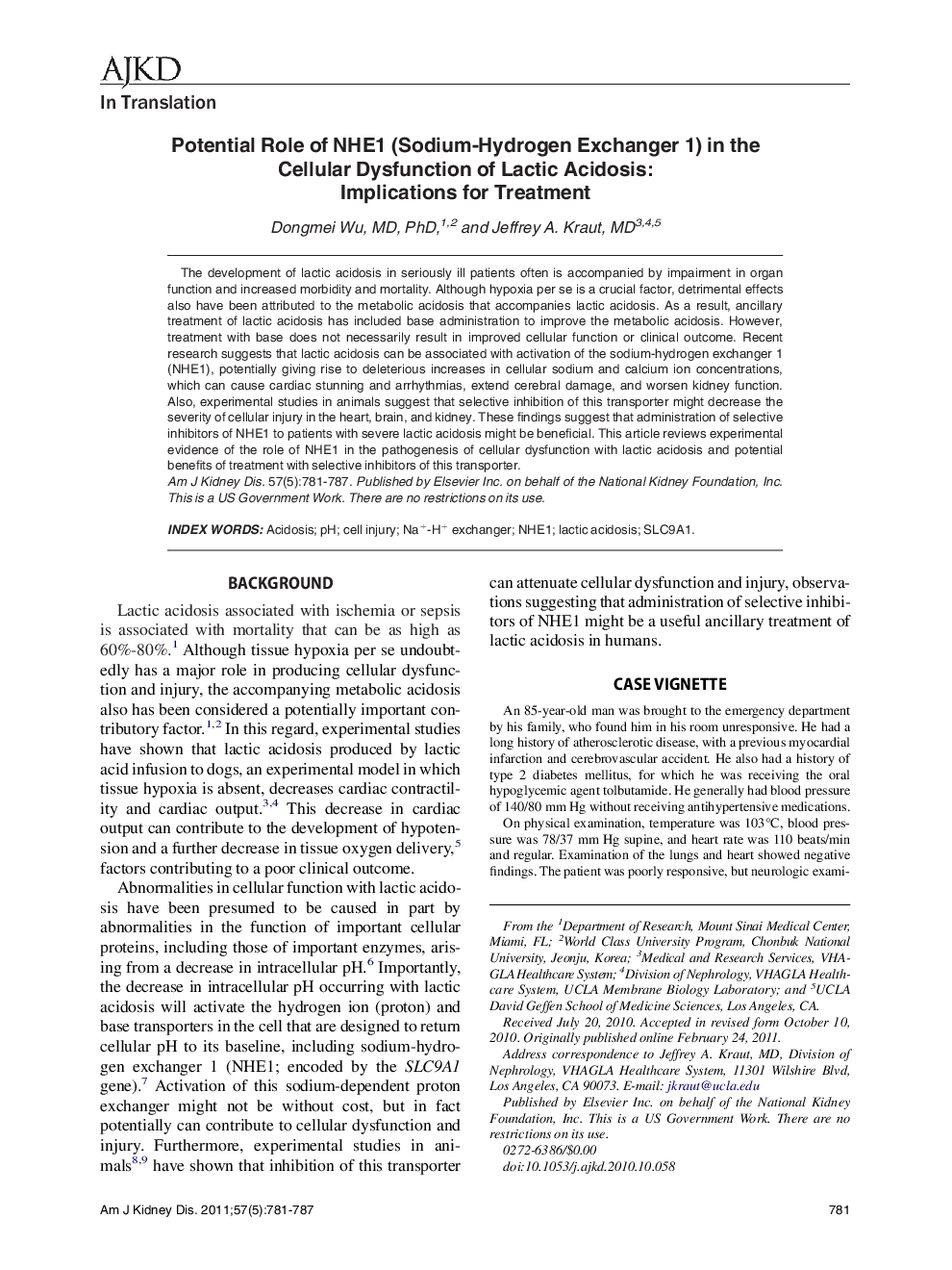| Article ID | Journal | Published Year | Pages | File Type |
|---|---|---|---|---|
| 6158367 | American Journal of Kidney Diseases | 2011 | 7 Pages |
Abstract
The development of lactic acidosis in seriously ill patients often is accompanied by impairment in organ function and increased morbidity and mortality. Although hypoxia per se is a crucial factor, detrimental effects also have been attributed to the metabolic acidosis that accompanies lactic acidosis. As a result, ancillary treatment of lactic acidosis has included base administration to improve the metabolic acidosis. However, treatment with base does not necessarily result in improved cellular function or clinical outcome. Recent research suggests that lactic acidosis can be associated with activation of the sodium-hydrogen exchanger 1 (NHE1), potentially giving rise to deleterious increases in cellular sodium and calcium ion concentrations, which can cause cardiac stunning and arrhythmias, extend cerebral damage, and worsen kidney function. Also, experimental studies in animals suggest that selective inhibition of this transporter might decrease the severity of cellular injury in the heart, brain, and kidney. These findings suggest that administration of selective inhibitors of NHE1 to patients with severe lactic acidosis might be beneficial. This article reviews experimental evidence of the role of NHE1 in the pathogenesis of cellular dysfunction with lactic acidosis and potential benefits of treatment with selective inhibitors of this transporter.
Related Topics
Health Sciences
Medicine and Dentistry
Nephrology
Authors
Dongmei MD, PhD, Jeffrey A. MD,
